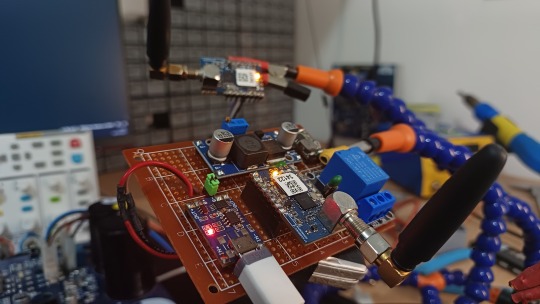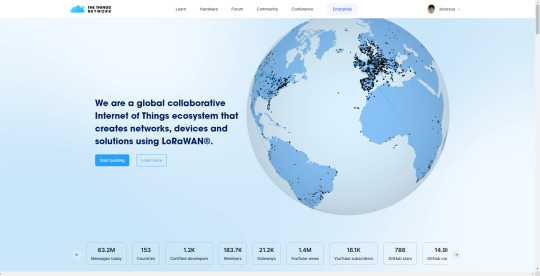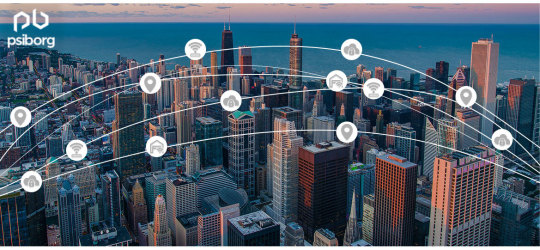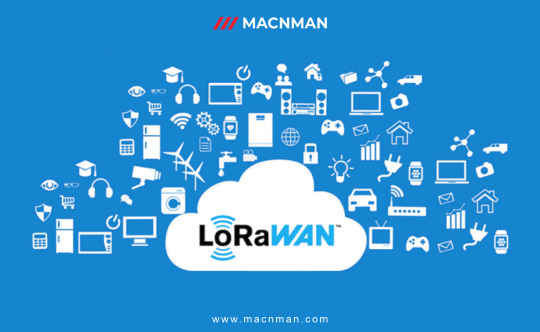#lorawan network
Text
GPIOs do LoRaMesh da Radioenge: Portas digitais
Aprenda como usar as GPIOs do módulo LoRaMesh da Radioenge
As GPIOs do LoRaMesh da Radioenge possibilita que possamos fazer aplicações de automação com um uso reduzido de hardware, dedicando apenas ao circuito de chaveamento (se necessário) e de alimentação.
No total temos no LoRaMesh 8 GPIOs sendo todas configuráveis como entrada ou saída digital e duas como leitura analógica. Porém neste post vamos apenas abordar as portas digitais.
Por qual motivo…

View On WordPress
#lora mesh arduino#lora mesh chat#lora mesh device#lora mesh library#lora mesh module#lora mesh network#lora mesh network raspberry pi#lora mesh protocol#lora mesh radio#lora mesh range#lora vs lorawan#loramesh#lorawan#lorawan devices#lorawan gateway#lorawan network#mesh lora
0 notes
Text
The Things Network: Primeiros passos
The Things Nework é o maior network server de LoRaWAN do planeta, sendo totalmente colaborativo e gratuito. Venha aprender a usar
A The Things Network ou TTN é um servidor de rede LoRaWAN colaborativa que permite que qualquer pessoa ou empresa possa ser um ponto de conexão LoRaWAN como também pode utilizar a cobertura já existente para conectar os end devices tudo de forma gratuita.
1 O que é The Things Network?
A TTN é um network server criado em 2015 com o objetivo de criar uma cobertura global e colaborativa de LoRaWAN…

Ver no WordPress
#arduino lorawan#arduino lorawan library#esp32 lorawan#lorawan#lorawan application server#lorawan concentrator#lorawan devices#lorawan distance#lorawan gateway#lorawan network#lorawan the things network#the things network#the things network gateway#the things network map
0 notes
Text
LoRa Fusion present Superior Smartphones Connectivity 5G

In the future of connectivity, smartphones will take off thanks to the integration of LoRA Fusion components
The current state of smartphone connection could be on the cusp of undergoing a significant upheaval. The Long The spectrum (LoRA) technology, which is well-known for its low-power communication capabilities across long distances, is on the verge of being incorporated into smartphones. This will open up a world of fascinating possibilities and revolutionize the linked world. This possible first-mover advantage might represent a significant step forward for the smartphone industry, despite the fact that exact specifics and development schedules are still in the process of being developed.
LoRA Fusion is what exactly?
The LoRA Fusion technology is a cutting-edge innovation that brings together the benefits of cellular networks with the advantages of LoRA. LoRA is superior than cellular networks in terms of long-range communication and low power consumption, whereas cellular networks provide high bandwidth and connections that are dependable.
LoRA Fusion enables customers to access a one-of-a-kind set of advantages by combining these capabilities, which are as follows:
Extended Network Reach: LoRA is able to transcend the restrictions of cellular coverage, making it possible to have dependable access even in places that are underserved or situated in distant areas. Individuals who often travel to rural regions, operate in settings that are geographically isolated, or depend on emergency communication services in circumstances that are not urban will find this to be of great use.
LoRA’s low power consumption greatly minimizes the amount of battery drain that occurs when compared to typical cellular connections, which results in an enhanced battery life. Those users who need their smartphones to have a longer battery life on a single charge may find this to be a very important feature, particularly in circumstances where access to charging stations may be restricted.
Potential for a large Range of Applications: LoRA Fusion enables a large variety of applications that go beyond what is considered to be fundamental communication. The company is able to facilitate a seamless integration of Internet of Things (IoT) devices, which enables users to remotely monitor and interact with smart homes, smartphones and tablets, as well as business machinery. This is possible throughout locations where wireless coverage is impeded.
A Benefit of Being the First Mover : The smartphone maker who is the first to effectively incorporate LoRA Fusion technology has the potential to acquire a major competitive edge among their competitors. This innovative approach would appeal to consumers who are knowledgeable about technology and are searching for enhanced connection options and cutting-edge features respectively. Additionally, early adopters might use LoRA Fusion to build unique apps and services, further distinguishing themselves as leaders in the ever-changing mobile industry when they do so.
Chances as well as challenges for Success
Despite contrast to being true that the adoption of LoRA Fusion into smartphones encounters an extensive amount of potential, there are some obstacles which need to be navigated.
These consist of a few of them:
Integration of Hardware
Adapting smartphone designs to incorporate LoRA technology may need the installation of extra hardware components, which may have an effect on the device’s dimensions, weight, and maybe even its price.
Standardization and Adoption
The establishment of industry-wide standards and the guarantee of comprehensive network coverage for LoRA will be essential to the success of the initiative.
Application Development
It is necessary to encourage developers to design engaging and user-friendly apps that use the unique features of LoRA Fusion in order to be successful in driving user adoption.
In spite of these obstacles, there is no denying the potential advantages that LoRA Fusion might bring about. The integration of cellular and LoRA technologies in mobile devices has the potential to revolutionize the concept of connection, provide users with more control, and open the door to the development of innovative new applications that can be used in a wide range of sectors. It is possible that the first smartphone maker to adopt LoRA Fusion will be at the forefront of determining the future of mobile communication. This is because the technology will evolve and these issues will be overcome.
Discover LoRa Fusion 8 Key Features:
image credit to jooby
Internet of Things (IoT) networks use game-changing LoRa (Long Range) wireless communication protocol. Utility, medical, agricultural, urban infrastructure, and environmental quality monitoring industries use it. Let’s examine the top eight LoRa technology features that have shaped its widespread adoption and remarkable use.
1.Long-range of Lora Fusion
LoRa technology is named for its seamless device operation over long distances. Its impressive ability to transmit data across several kilometers in open spaces ensures uninterrupted communication even in remote areas. LoRa can transmit data up to 15 km in open spaces.
2. LoRa Uses little power
LoRa technology excels in low-power devices, making it a popular solution for battery-powered IoT devices. LoRa technology has a 5–10-year battery life due to its low power consumption, reducing maintenance and improving system efficiency. This is especially useful when hundreds or thousands of sensors must work seamlessly and battery life must be optimized.
3. LoRa Cost-effective fix
When deploying an IoT network, device cost and infrastructure deployment are crucial. Fortunately, LoRa solutions are affordable. Compared to other wireless technologies, LoRa network setup is simple and inexpensive. LoRa-enabled devices are also affordable due to low manufacturing and purchasing costs. These factors make LoRa technology suitable for many IoT projects, including large-scale deployments.
4. LoRa Scalability
Scalability is important in IoT networks because investors expect them to add devices and expand coverage. LoRa technology scales quickly and easily. LoRa technology underpins the LoRaWAN protocol. It connects unlimited sensors, meters, and other devices. LoRa networks scale smoothly and efficiently thanks to this protocol-based system, which simplifies infrastructure expansion and device management in large-scale IoT projects.
5. LoRa Security
LoRa technology protects sensitive data and data transmission with a fully featured security suite. The AES-128 protocol encrypts data and strengthens communications, protecting LoRa networks from unauthorized access and tampering. LoRaWAN also authenticates devices to prevent unauthorized access to the IoT network.
6. LoRa Communication both ways
LoRa allows sensors to receive commands and send data to the network during two-way communication between devices and gateways. Devices can receive instructions and relay critical data bidirectionally, which is essential for real-time control and monitoring projects.
7. LoRa Geolocation services
Well-known LoRa geolocation eliminates the need for GPS hardware to track and position devices. LoRaWAN networks precisely locate devices using TDoA. This remarkable feature is used in asset tracking, logistics, and geofencing.
8. LoRa Compatibility
After careful consideration of open standards, LoRa protocols ensure device compatibility and efficient interaction with LoRaWAN networks. A diverse market of IoT-compatible products has grown due to this open approach. Finally, LoRa technology gives customers network flexibility.
Read more on Govindhtech.com
0 notes
Text
Indoor Environment Monitor HRU-3601
With the HRU-3601, Heltec Automation offers a cost-effective environmental monitor for measuring temperature and relative humidity (HRU-3601A) or TVOC (HRU-3601B).
A Sensirion SHT-3x is used to measure in the HRU-3601A, and an SGP30 is used in the HRU-3601B.
Heltec Automation bietet mit dem HRU-3601 einen preisgünstigen Umweltmonitor zur Messung von Temperatur und relative Luftfeuchtigkeit…

View On WordPress
0 notes
Link
Now the world’s largest decentralized LoRaWAN® network, Helium serves as an accessible and low-cost way to connect things across the Internet and offers an alternative option to traditional wireless networks.
0 notes
Text
https://poisonedthoughts.com/lorawan-testers-for-range-coverage/
Lorawan Testers For Range Coverage. Coverage testing for LoRaWAN is very important, you may want to know more about the exact limits and limitations of LoRaWAN. Whether it’s to see if it’s compatible with a device located far from your home, whether it’s a wristwatch used outdoors, or perhaps a water or gas sensor placed underground. A coverage test helps you evaluate the coverage area of the WAN.
Villa owners with rental apartments can also try the offer. RAKwireless can help you achieve this goal effortlessly. The coverage test mainly depends on your specifications and is performed to help you find out the map or radius of your wireless network
1 note
·
View note
Text
WHAT IS LPWAN- LOW POWER WIDE AREA NETWORK?
LPWAN is a communication method between linked devices that was founded and developed by Sigfox. The fundamental advantage of LPWAN is that it permits low-bit-rate communication among devices dispersed across a large geographical area.
LPWAN refers to a set of communication technologies (Sub 1GHz, NB-IoT, LTE CAT M, ZIGBEE) used to link devices, sensors, actuators, controllers, and so on. The goal of creating a low power wide area network is to create a communication channel for the Internet of Things network that uses less power and has a lower data rate.
LPWAN TYPES

RF SUB-1 GHZ
Sub-1 GHz RF, as the name implies, operates at low-frequency ranges less than 1 GHz. It operates in the ISM band, which has a frequency range of less than one gigahertz. This technology is mostly relevant for RF IoT applications. Some of its advantages are as follows:
Sub-1 GHz RF has a greater range while using the same output power. Because of its vast range, it can go more than 100 kilometres.
Power usage is quite low.
Ability to deal with interference more effectively.
NB-IOT
NBIoT, or Narrowband IoT LTE, is a self-contained LPWAN technology. It enables the mass deployment of IoT devices. NB-IoT is often used to transport data at a low frequency. When a message is sent via NB-IoT, it consumes very little bandwidth. Among the advantages of NB-IoT are:
It uses less energy.
Cost-efficient.
It is safe to use.
Devices can be deployed in bulk.
Excellent choice for embedded sensors.
CAT-M1 OR LTE-M?
CAT M is another LPWAN technology that operates on 1.4 MHz of bandwidth. It enables higher total data rates, more location accuracy, and shorter latency. It allows voice calls and mobility mode. CAT M has the following advantages:
The maximum data rate is 375kbps.
VoLTE functionality is supported.
There is complete mobility assistance provided.
LTE in-band mode of operation
ZIGBEE
The IEEE 802.15.4 standard is used to operate ZIGBEE networks. It’s appropriate for high-level communication protocols. It is primarily intended for small-scale IoT projects for personal use, such as home automation, where wireless communication is required. ZIGBEE has the following advantages:
It supports several network topologies.
Battery life is extended.
Spectrum of direct sequence spread
Latency is low.
LORAWAN
LoRaWAN is a well-known worldwide standard for LPWAN networks based on LoRa technology. The LoRaWAN standard for low-power wireless networks was created to link devices that run on batteries. LoRaWAN allows for highly seamless information transfer over the internet between smart devices without the need for complicated installations. Some of the advantages of LoRaWAN include:
The device linked to the LoRaWAN network may send data from a distance of 1 km to 10 km.
Because AES128 is used between network servers and end nodes, it enables high-security data encryption.
A single Lora Gateway may connect thousands of devices.
Because of the adjustable data rates, it consumes less bandwidth.
LoRaWAN’s basic architecture makes it simple to deploy.
LPWAN BENEFITS
The following are the advantages of LPWAN technology:
Less power consumption: LPWAN operates at extremely low power consumption.
Long-distance transmission: LPWAN permits device connectivity across distances of up to 20 kilometres.
Long battery life: Because LPWAN requires less power, the gadget battery may last for more than ten years.
Reduced Gateways: Because LPWAN permits device connectivity over greater distances, fewer gateways are needed for communication.
CONCLUSION
LPWAN technology is a remarkable technology that is revolutionising the way IoT devices communicate. If you have a project that requires LPWAN technology, PsiBorg an IoT solutions development company can assist you. We are a group of skilled developers with extensive expertise integrating multiple LPWAN technologies. Please contact us immediately for further information.
This article was originally published here: LPWAN- LOW POWER WIDE AREA NETWORK
1 note
·
View note
Text
What is the difference between LoRa and LoRaWAN?
Introduction:
LoRaWAN serves as the communication protocol connecting the LoRa signal (which carries sensor data) to the respective application(s). To simplify, think of LoRa as the radio signal transporting the data, while LoRaWAN acts as the governing framework that dictates how this data travels and communicates within the network.

What is LoRa?
LoRa, short for Long Range, is a wireless technology known for its extended range and energy-efficient characteristics. It operates within unlicensed wireless frequencies, similar to how Wi-Fi utilizes the unregulated 2.4 GHz and 5 GHz bands. The specific frequency employed by LoRa varies depending on the geographic location of the deployment. For instance, in North America, LoRa operates in the 915 MHz band, while in Europe, it utilizes the 868 MHz band and in India it is 865 MHz to 867 MHz.
It is crucial to be aware of the legally permitted frequencies for LoRa deployments in each respective location. In terms of its communication range, LoRa can transmit data up to a distance of 10 kilometers in ideal conditions with a clear line of sight.
Low Power Wide Area (LPWA) technology can be categorized into two main types. On one hand, there's cellular LPWA, which utilizes mobile networks. Examples of cellular LPWA technologies include Narrowband IoT (NB-IoT) and Long Term Machine Type Communications (LTE-M). On the other hand, there's non-cellular LPWA like LoRa, which disseminates data by dividing it into encoded packets and transmitting them across various frequency channels and data rates.
What is LoRaWAN?
LoRaWAN is a network protocol that serves as the bridge between the LoRa signal, which carries sensor data, and the applications that use this data. In simpler terms, LoRa represents the radio signal responsible for transmitting the data, while LoRaWAN is the communication protocol that manages and defines how this data is transmitted across the network.
LoRaWAN offers several valuable advantages, including low power consumption, extensive coverage range, and cost-effective connectivity for devices that don't require high data transfer speeds. It's an excellent choice when cellular connectivity is too expensive or Wi-Fi coverage is unavailable. Some of the most compelling use cases for LoRaWAN include:
Agriculture: LoRaWAN's long-range capabilities provide reliable connectivity for rural applications where high data transfer rates are not necessary, making it ideal for agricultural applications. LoRaWAN sensors for agriculture are used for cattle management, soli monitoring, and temperature monitoring.
Asset Tracking and Logistics: LoRaWAN supports cost-effective location tracking of assets, with optimized battery life, making it a practical choice for asset management and logistics.
Smart Metering: LoRaWAN's sensors have the ability to reach even in underground utility locations makes it a suitable choice for smart metering applications.
Smart Homes: LoRaWAN can penetrate obstacles like walls and supports battery-powered devices with low data consumption, making it an attractive connectivity option for smart home applications.LoRaWAN sensors for smart homes are used for Air quality monitoring, water quality monitoring, and temperature & humidity monitoring.
Healthcare: The low power consumption, affordability, and reliability of LoRa technology make it suitable for connected health applications. IoT solutions based on LoRa hardware can monitor high-risk patients or systems around the clock, ensuring comprehensive health and medical safety management.LoRaWAN Gateways and sensors enhance production practices, enable efficient tracking and monitoring of shipments, and facilitate the development of cutting-edge medications.
Industrial Applications: LoRa-enabled devices and sensors play a crucial role in the transformation of industrial IoT operations like mentioned above. They digitize legacy processes and equipment, leading to increased profits, lower costs, and enhanced efficiency. These devices provide real-time data for predictive maintenance, machine health monitoring, reduced downtime, and more.
3 notes
·
View notes
Text
Leitura analógica do LoRaMesh da Radioenge
Aprenda como usar a leitura analógica com o módulo LoRaMesh da Radioenge
A leitura analógica com o LoRaMesh possibilita com que possamos fazer um amplo sistema de sensoriamento remoto sem precisar necessariamente de microcontrolador adicional na parte do slave.
Por qual motivo usar a leitura analógica do LoRaMesh da Radioenge?
Uma leitura digital em muito dos casos já é mais que o suficiente para saber se algo está ou não funcionando, mas a leitura analógica do…

View On WordPress
#lora mesh arduino#lora mesh chat#lora mesh device#lora mesh library#lora mesh module#lora mesh network#lora mesh network raspberry pi#lora mesh protocol#lora mesh radio#lora mesh range#lora vs lorawan#loramesh#lorawan#lorawan devices#lorawan gateway#lorawan network#mesh lora
0 notes
Text
Módulo LoRaWAN da Radioenge Tutorial Completo
O módulo LoRaWAN da Radioenge é homologado pela Anatel e 100% fabricado no Brasil e neste post você aprende tudo sobre ele.
O módulo LoRaWAN da Radioenge é uma placa de fabricação nacional e homologada que pode ser usada com qualquer microcontrolador ou microprocessador através de comandos AT via porta serial.
1 O que é LoRaWAN?
O LoRaWAN é um protocolo que desenvolvido para aumentar o alcance da rede LoRa e utiliza nós em estrela para diminuir ao máximo o consumo da bateria, de modo que os ‘end nodes’ fiquem…

Ver no WordPress
#arduino lorawan#arduino lorawan library#class a lorawan#esp32 lorawan#esp32 lorawan gateway#lorawan#lorawan board#lorawan concentrator#lorawan development kit#lorawan devices#lorawan esp32#lorawan examples#lorawan gateway#lorawan network
1 note
·
View note
Text
Indoor Bluetooth Gateway LoRaWAN: Revolutionizing Indoor Tracking

View On WordPress
An Indoor Bluetooth gateway is a device that implements Bluetooth 5.0 and LoRaWAN protocols. It acts as a bridge between Bluetooth beacons and a cloud server by receiving BLE packets and forwarding them over LoRa. This enables long-range communication without incurring cellular network costs. By leveraging our proprietary technology, it can handle any BLE packet format.
2 notes
·
View notes
Text
feather radiofruit prototypes showed up
these are two RP2040 'bones' boards that have an RFM69 900MHz module soldered in the empty spot, good for making basic wireless networks that have support for addressing and packeted data transmission. they can be transmitters or receivers, here both have the same code on them and when we press the user button on one feather, the opposite ones displays a message on the OLED with the RSSI. this makes it easy for me to verify the antenna quality. theres also a uFL antenna spot so we can connect big antennas using a uFL to SMA adapter - we covered finding these adapters on the Great Search this week! next up we will try RFM9x LoRa modules, those can run a LoRaWAN stack on the roomy RP2040 chip.
4 notes
·
View notes
Text
Advanced IoT for Wildfires
Wildfires cause biodiversity loss, soil damage, and climate impact. LoRaWAN mesh networks aid early detection and prevention.
By Carsten Brinkschulte
Apart from posing a direct threat to life, wildfires lead to biodiversity loss and ecosystem disruption. Intense heat damages soil structure, reducing fertility and increasing erosion risk. Fires emit significant quantities of carbon dioxide (CO2) and other greenhouse gases, contributing to climate change. Additionally, ash and other debris wash into waterways,…

View On WordPress
0 notes